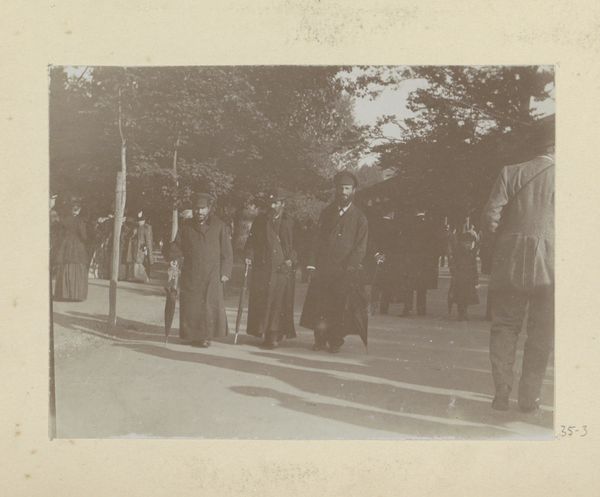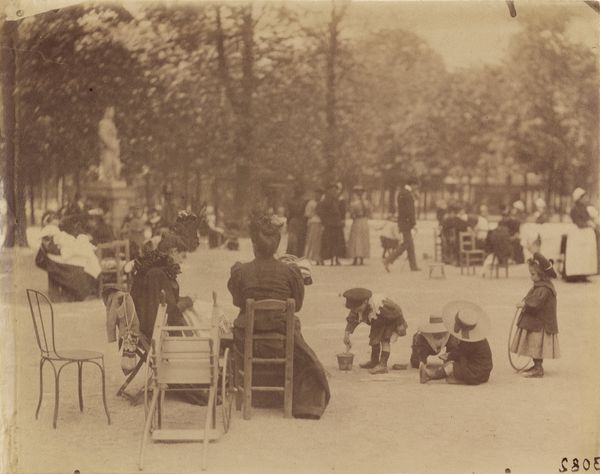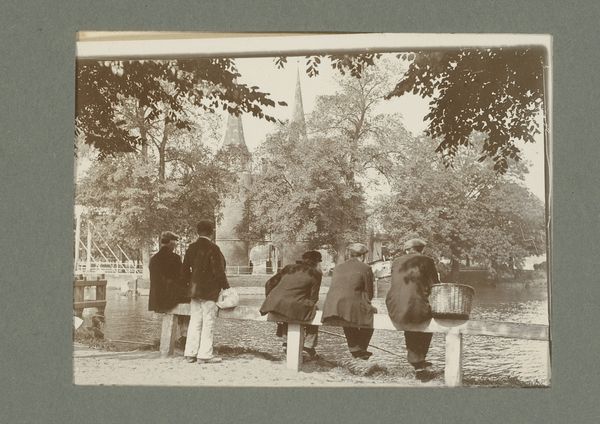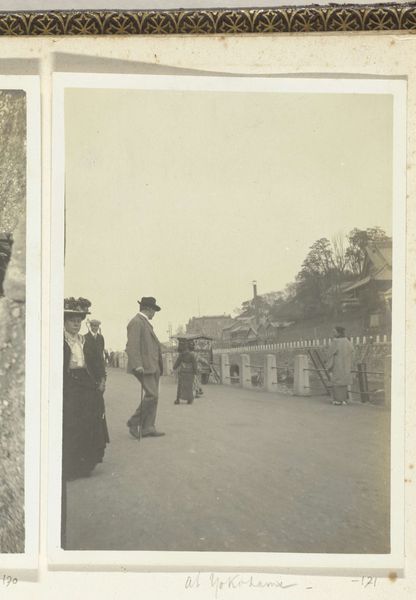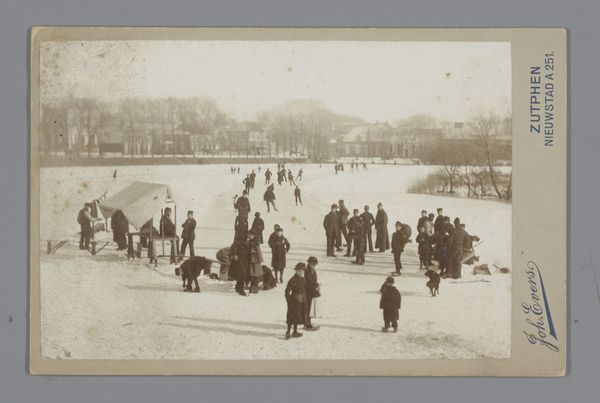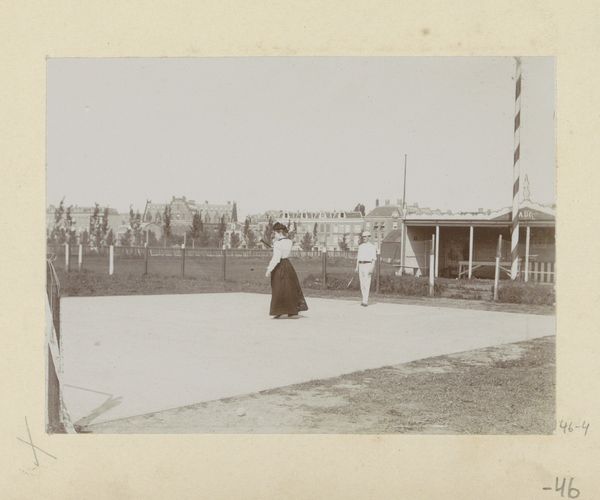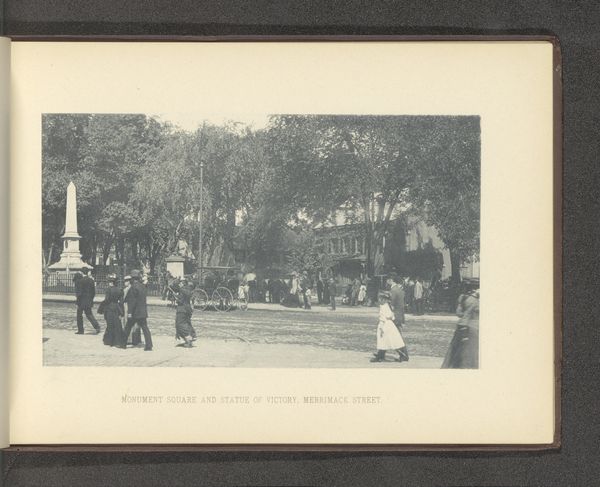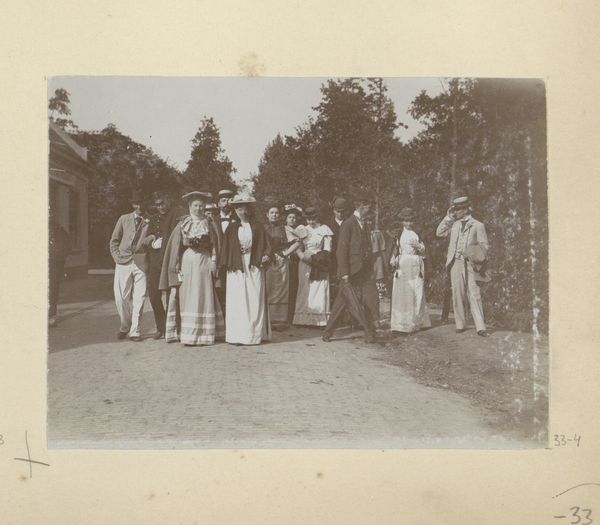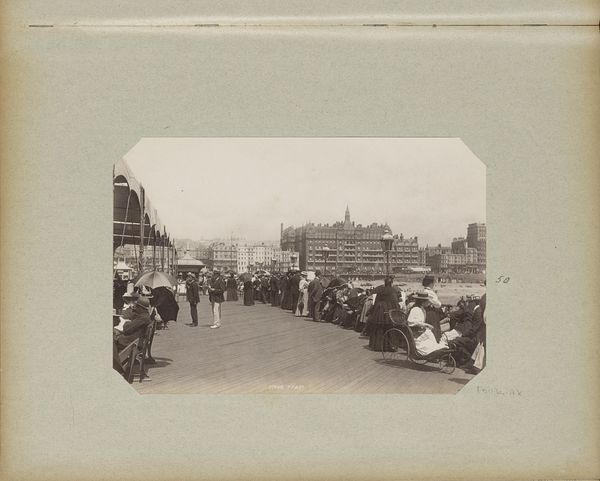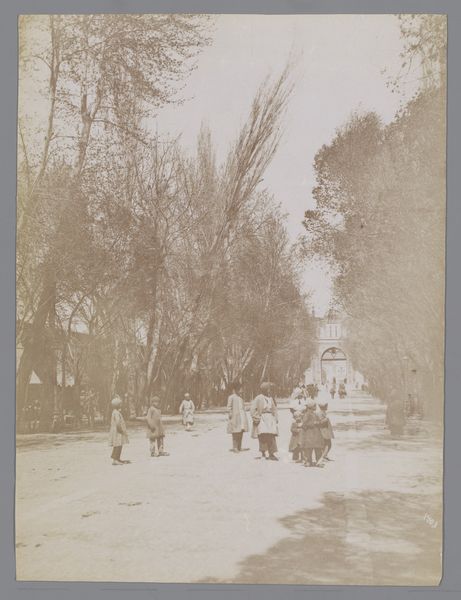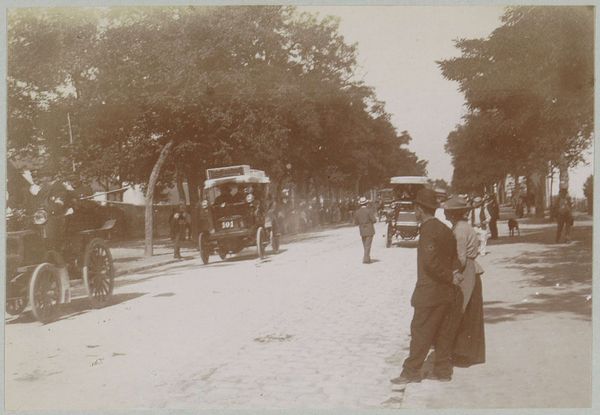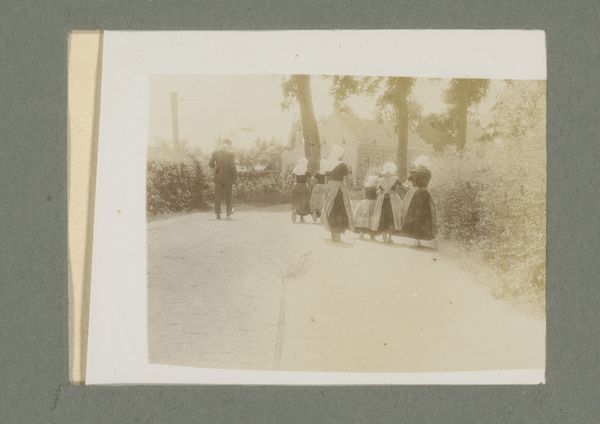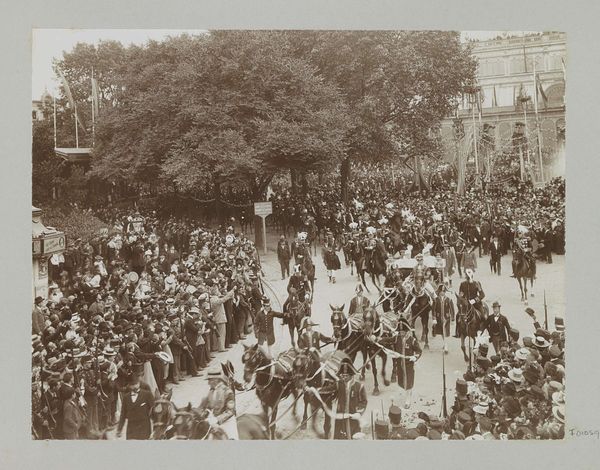
Dimensions: height 81 mm, width 109 mm
Copyright: Rijks Museum: Open Domain
Curator: This photograph, titled "Wandelende mensen op straat"— "Walking People in the Street"—by Hendrik Herman van den Berg, likely taken before 1894, presents a compelling snapshot of its era. Editor: Oh, I immediately get this pensive feeling, like everyone’s caught in their own little world despite being surrounded by so many others. A sepia-toned river of anonymous lives flowing gently. Curator: Precisely. Van den Berg's street photography is a visual record and a cultural artifact. Considering the period, this image serves as a window into the social dynamics of public space, reflecting the class distinctions inherent in late 19th-century society. Note how certain figures occupy the foreground while others blur into the background. Editor: Yes, I see what you mean about the foreground and background playing a part. I wonder if he intentionally created that contrast. You have these sharply dressed figures and the rest almost blend together like leaves rustling in the wind. The lighting and composition really contribute to a sense of observing a moment rather than staging it. Curator: Absolutely, and further scrutiny reveals an early exploration into the performativity of identity. We see the sartorial choices and the implicit rules governing interactions within this urban environment. How are identities being shaped and asserted? Also, how might the photographic medium itself play a role in defining these observations and behaviors? Editor: It's interesting how photography captures even the in-between moments that most painting styles wouldn't. The awkward posture or distracted gaze of someone just passing by gives a candid impression, rather than posing someone. There is something authentic that jumps off of this. It invites curiosity about the lives in this little frozen snippet. Curator: Right. And let’s think more about that technology itself. The evolution of photographic practices made the capture of such quotidian scenes possible. We should contextualize its proliferation within broader histories of visual culture. The street became a theater in its own right, for real. Editor: Exactly! Looking at it, I'm reminded of how fleeting existence is. Every individual with his own purpose now faded in the passage of time. Even those buildings might not even be there now. Just makes me appreciate these captured scenes, doesn't it? Curator: I agree. Van den Berg provides a compelling study of social presence. Editor: For me, this piece whispers to me about impermanence—beautifully and nostalgically so.
Comments
No comments
Be the first to comment and join the conversation on the ultimate creative platform.
